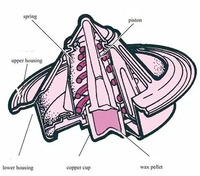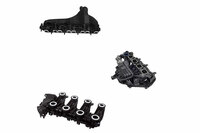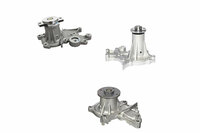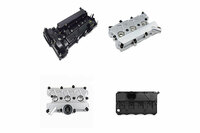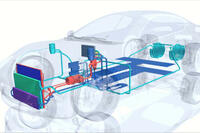Wax Thermostat
Specifications
Wax type thermostat is the most widely used in combustion engines, and SDZ possesses and masters matured skills of wax thermostat's development and production. Thewax pellet thermostat in the copper expands when it heats up and contracts when it cools.
Characteristics of Wax Type Thermostat
The wax is enclosed in a metal capsule in touch with water. The valve close when the wax is cooled. It blocks the passage of water into the radiator. When the wax is heated and expands, and the rod is expelled. The valve opens and wax is cooled, and closed by spring.
Wax Thermostat Diagram
Wax thermostat is mainly composed of
1. main valve
2. bypass valve
3. inductive element (wax pellet)
The inductive element is the core part of automotive electronic thermostat work
Wax Thermostat has simple structure and low cost thus has a wide application in a conventional vehicles.
Wax Type Thermostat Operation
Wax Expansion: A wax type thermostat consists of a sealed chamber filled with a wax that expands when heated. As the wax expands, it pushes a piston or a diaphragm, which activates a valve.
Valve Operation: The valve can either allow or restrict the flow of a coolant or a refrigerant, depending on the type of thermostat. For example, in a car engine cooling system, theautomotive thermostat valve opens when the engine reaches a certain temperature, allowing coolant to flow through the engine and cool it down.
Temperature Control: Once the wax has expanded and the valve is open, the coolant or refrigerant flows through the system and reduces the temperature. As the temperature drops, the wax contracts, and the valve closes, restricting the flow of coolant or refrigerant. This cycle continues, maintaining the desired temperature.
Wax type thermostats are commonly used in heating and cooling systems, as well as in vehicle engine components. They are reliable, accurate, and durable, making them a popular choice for temperature control applications.
If you are looking reliablecar engine parts manufacturers, please choose us, and we will be your partner.
- Country: China (Mainland)
- Business Type: Manufacturer
- Founded Year: 2013
- Address: No.9, Haohai RD, Xinbang Industrial Zone, Songjiang, Shanghai, China
- Contact: SDZ com

